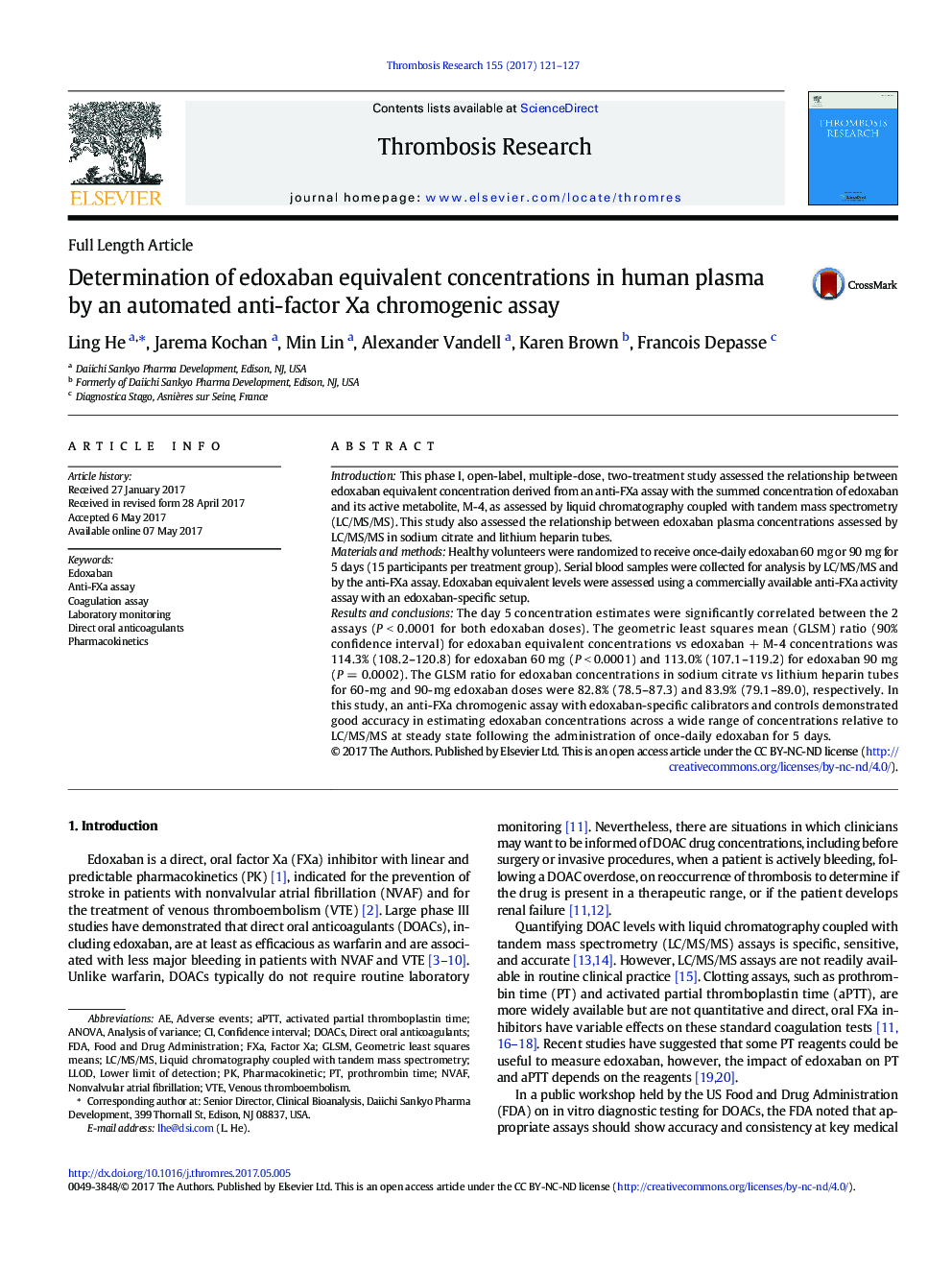| Article ID | Journal | Published Year | Pages | File Type |
|---|---|---|---|---|
| 5622025 | Thrombosis Research | 2017 | 7 Pages |
Abstract
The day 5 concentration estimates were significantly correlated between the 2 assays (PÂ <Â 0.0001 for both edoxaban doses). The geometric least squares mean (GLSM) ratio (90% confidence interval) for edoxaban equivalent concentrations vs edoxaban + M-4 concentrations was 114.3% (108.2-120.8) for edoxaban 60Â mg (PÂ <Â 0.0001) and 113.0% (107.1-119.2) for edoxaban 90Â mg (PÂ =Â 0.0002). The GLSM ratio for edoxaban concentrations in sodium citrate vs lithium heparin tubes for 60-mg and 90-mg edoxaban doses were 82.8% (78.5-87.3) and 83.9% (79.1-89.0), respectively. In this study, an anti-FXa chromogenic assay with edoxaban-specific calibrators and controls demonstrated good accuracy in estimating edoxaban concentrations across a wide range of concentrations relative to LC/MS/MS at steady state following the administration of once-daily edoxaban for 5Â days.
Keywords
FDANVAFFXaDOACsVTEAPTTLC/MS/MSedoxabananalysis of varianceANOVAVenous thromboembolismLLODactivated partial thromboplastin timeprothrombin timeFood and Drug AdministrationDirect oral anticoagulantsAdverse eventspharmacokineticPharmacokineticsconfidence intervalFactor XaNonvalvular atrial fibrillationlower limit of detectionlaboratory monitoringliquid chromatography coupled with tandem mass spectrometry
Related Topics
Health Sciences
Medicine and Dentistry
Cardiology and Cardiovascular Medicine
Authors
Ling He, Jarema Kochan, Min Lin, Alexander Vandell, Karen Brown, Francois Depasse,
